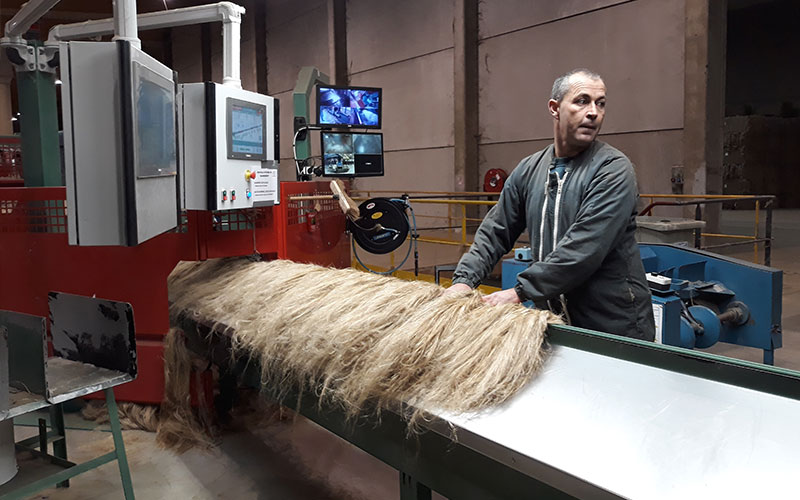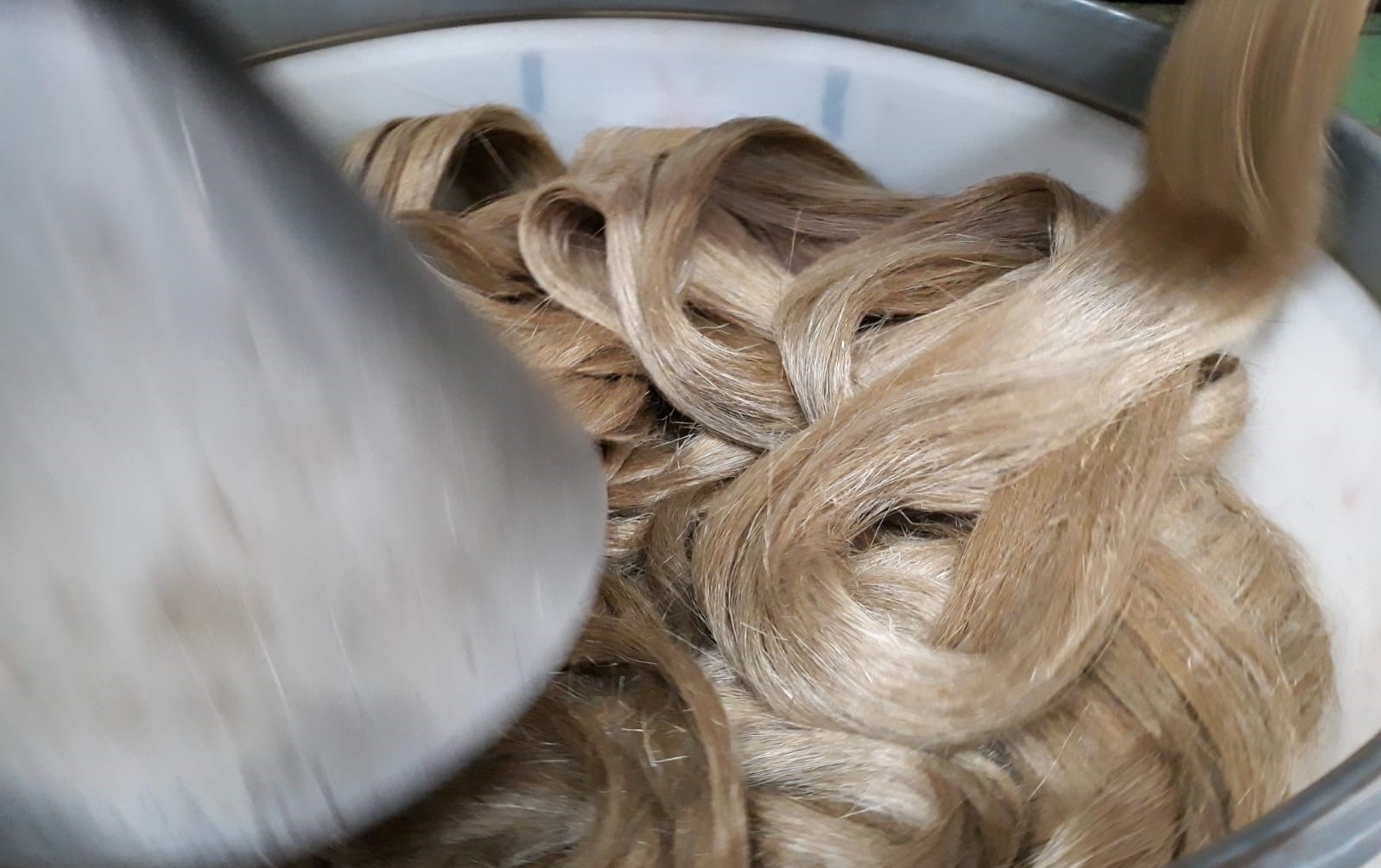From earth to racket !
The flax farm, covering 5,000 hectares, employs 80 people, divided between ten activities. ‘Flax’s great strength is that it’s completely on trend. We don’t use genetically modified crops or chemical products. There’s no waste produced – everything that enters our factory will be sold. Nothing is discarded,’ explains Anne Lamerant.
The flax seeds are sewn between early February and late March. After 100 days of growth and just a single morning when the plants flower, the flax is harvested in July. Then, through August, it dries on the ground, in a process known as retting – in this natural development, the fibres separate. At the end of this process, farm workers create balls of flax that can then be stored, to be transformed across the year through scutching and combing.
Flax fibre can be transformed into many end products, the best-known being fashion items, clothes and household linen, but it can also go into stationery, composite materials or insulation, among other things.
By way of example, the company has found a new outlet in sports and leisure, as flax can now go into making skis or tennis rackets, opening new opportunities.
Relaunching an activity
Following harvesting, the flax undergoes scutching, the fibre being extracted from the straw. Then comes the combing, now a rare activity, given that La Linière du Ressault was just one of four places in France registered as practising this activity in 2015, having relaunched it on its site. Thanks to a maintenance technician and a part of the workforce with some 30 years of experience, it has proved possible to train new teams in this activity inhouse. This specific process, most often carried out in textile mills, consists of cleaning the fibres thoroughly, removing impurities, then placing them in parallel to obtain a continuous ribbon that the mills exploit to make thread. ‘It’s important for us to preserve our know-how and encourage staff loyalty. We were dealing with a machine that hadn’t been used in ten years, but we had kept maintaining it,’ the manageress explains.
This is the final stage in the process of transformation before sending the flax fibres to the textile mills, the main customers.
It’s quite a powerful story, telling of how a French factory was closed for ten years before being revived, knowing the intense competition with Asia. It’s great to be able to say that it’s been started up again as the company has achieved an important position in the market, making a quality product using a high-quality machine. The company is very happy to be training up young people in this profession, explaining to them that they should believe in it.


